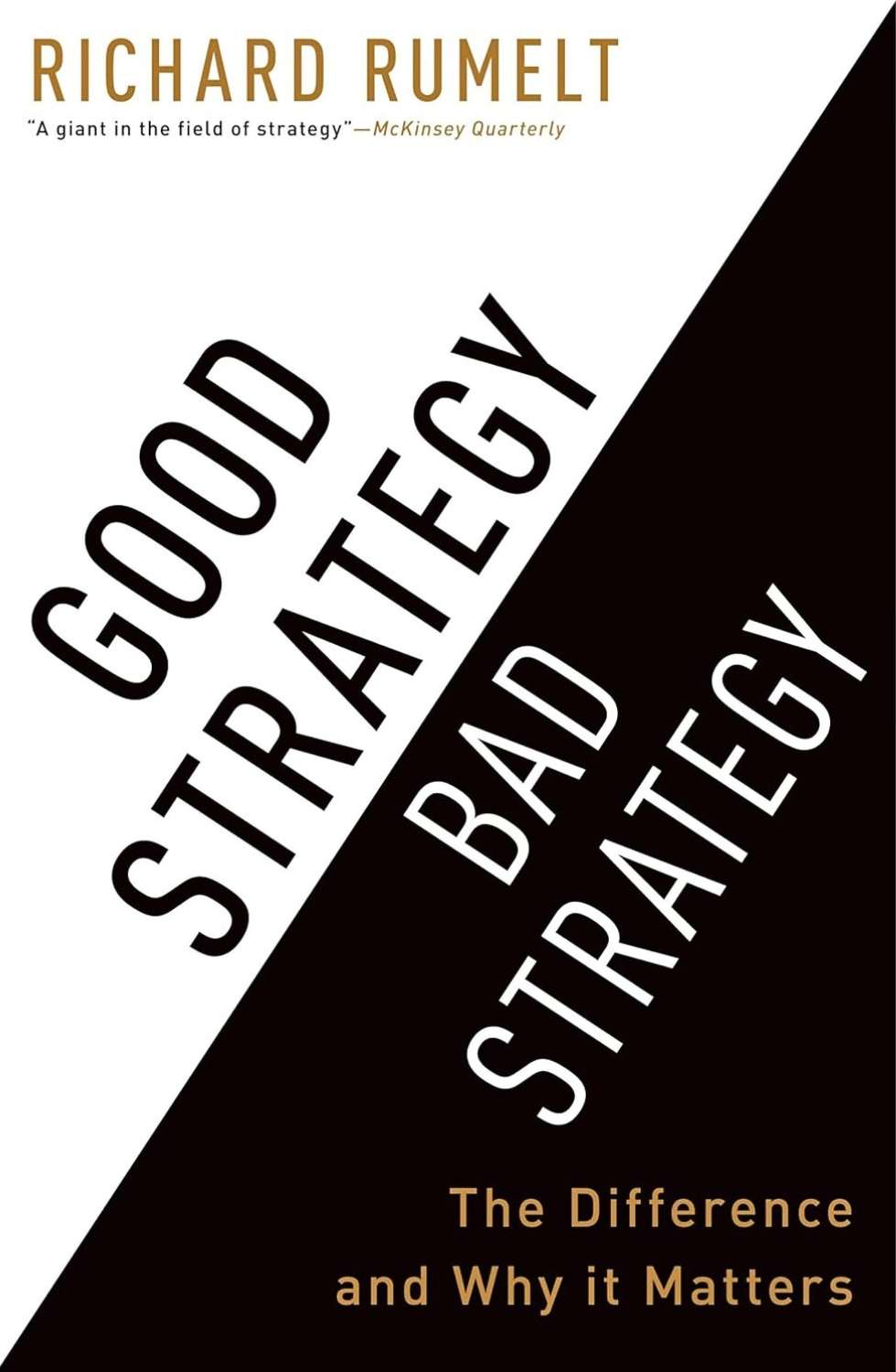GOOD STRATEGY BAD STRATEGY
FULL SUMMARY & KEY TAKEAWAYS

Introduction:
“Good Strategy Bad Strategy” explains what constitutes effective strategy and why so many organizations struggle to develop and implement it. Richard P. Rumelt argues that good strategy is not simply a list of goals or aspirations, but rather a coherent set of actions designed to overcome specific obstacles and achieve a competitive advantage. The book provides a framework for identifying and developing good strategy, as well as recognizing and avoiding bad strategy.
Key Concepts:
- The Kernel of Good Strategy: Rumelt identifies three essential components of good strategy: a diagnosis of the challenge, a guiding policy for dealing with the challenge, and a set of coherent actions designed to implement the policy.
- Bad Strategy: The book identifies several common characteristics of bad strategy, including fluff, failure to face the challenge, mistaking goals for strategy, and bad strategic objectives.
- Sources of Power: Rumelt explores various sources of power that can be leveraged to create a competitive advantage, such as leverage, proximate objectives, chain-link systems, design, focus, growth, advantage, and dynamics.
- Using Leverage: The book explains how to use leverage to amplify the impact of a strategy by focusing resources on critical points.
- Creating Proximate Objectives: Rumelt emphasizes the importance of setting proximate objectives that are achievable and contribute to the overall strategic goal.
Lean Thinking in Large Companies:
“Good Strategy Bad Strategy” is highly relevant to large companies. It provides a framework for developing effective strategies that can help them overcome challenges, achieve a competitive advantage, and drive long-term growth. Large companies can use the book’s principles to evaluate their existing strategies and identify areas for improvement.
Key Takeaways:
- Understand the three essential components of good strategy: diagnosis, guiding policy, and coherent actions.
- Recognize and avoid the common characteristics of bad strategy.
- Identify and leverage sources of power to create a competitive advantage.
- Use leverage to amplify the impact of your strategy.
- Set proximate objectives that are achievable and contribute to the overall strategic goal.
Conclusion:
“Good Strategy Bad Strategy” is a valuable resource for business leaders and strategists who want to develop and implement effective strategies. By providing a framework for understanding what constitutes good strategy and how to avoid bad strategy, the book helps organizations improve their decision-making and achieve their goals. This book is particularly relevant for companies that are facing complex challenges or are looking to improve their strategic planning process.

Marius Grobler is an authorised representative and Key Individual of Trive South Africa (Pty) Ltd FSP 27231.
The content on this webiste should not be considered as advice.
© Marius Grobler 2025. All rights reserved. Powered by Social Revolution